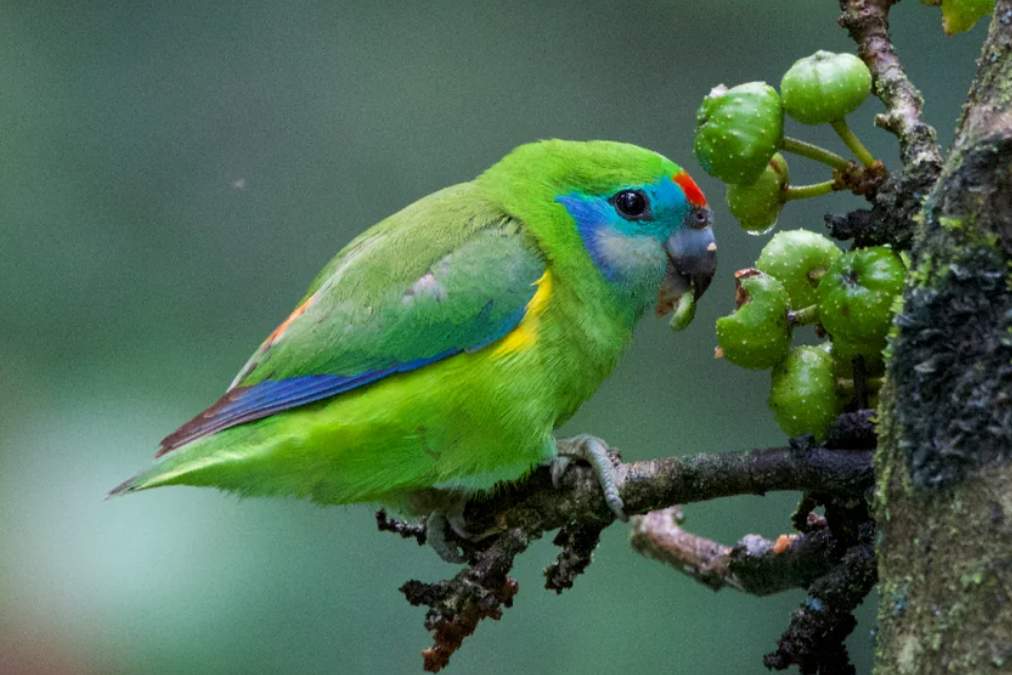The Rainbow Pitta (Pitta iris) belongs to the pitta family, “Pittidae,” an endemic species of north-western Australia. Rainbow Pittas replace their close relative, Noisy Pittas, in monsoon vine forests. This species is sedentary and rather solitary. There are many similarities between rainbow pittas and noisy pittas in terms of their habits. Their prey is snatched and broken open by snatching and poking with their bill, which is an unobtrusive way to forage on the forest floor. They hop from leaf litter to leaf litter, poking at hard-shelled creatures. An important part of their diet is snails, worms, and insects that live on the ground.

In early summer, just before the arrival of the monsoon, pittas become more vocal at the onset of breeding. It is common for males to climb trees, then chirp out their territorial whistles from a vantage point early in the morning and late in the afternoon, mostly from vantage points on high branches. The Rainbow Pitta roosts in trees as well. Black-breasted Pitta is another name for it. Approximately 160–180 mm is the size of a rainbow pitta.
There is no difference between the sexes when it comes to identification. The head is velvety black, and over each eye is a thick red-brown stripe. glistening mid-green back, rump, and wings; iridescent sky-blue shoulders grading to cobalt at the edges; outer flight feathers black with white centers. The lower belly and crissum are scarlet with tan-buff fringes; the throat and upper belly are velvety black.
There is a broad green tip on the tail, which is black. The eyes are dark brown. Black is the color of the bill. The feet are gray-brown to dark gray. The immature bird is the same as adults, except duller; the throat is dusky, speckled off-white; the blue shoulder patches are small; and the red-brown head stripes are remnants. As soon as a fledging bird reaches adulthood, its plumage grows. Rainbow Pitta’s call is a loud, clear whistle, like a want-a-whip, similar to Noisy Pitta’s.
Read More: House Sparrow Call and Facts

From November to March, birds nest and breed. A large domed nest, similar to that of Noisy Pitta, varying in depth from 110 mm to 40 mm, partly open, 110 mm in diameter, a line of decayed wood and grass, and lined with sticks, leaves, grasses, and dead bamboo; in mangroves, bamboo clumps, around trees, on the ground, or up to 3 meters above the ground.
The bird lays 3 to 4 glossy cream-colored eggs with sepia blotches and dull purple-grey markings, 30 x 24 mm in size. A Rainbow Pitta can be found on Melville Island, Groote Eylandt, and coastal Arnhem Land, NT, and north-western Kimberley’s, WA, as well as in pockets of vine forest in coastal Arnhem Land, NT. There are no races.
Read More – The vibrantly Colored Red-bellied Pitta







